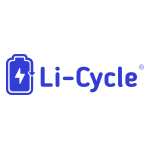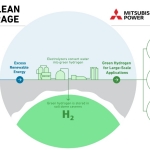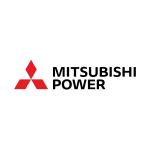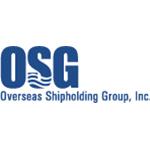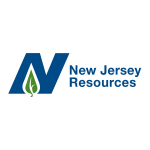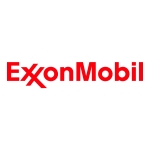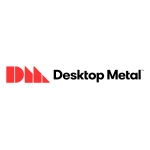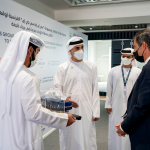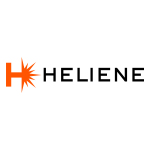-
Novus Capital Corporation II (NYSE: NXU, NXU.U, NXU WS) (“Novus”) and Energy Vault, an energy storage solutions company, jointly announce that they have entered into a definitive agreement for a business combination; upon closing, the combined company is expected to trade on NYSE under the symbol “GWHR.”
-
The transaction values the combined company at an implied pro-forma enterprise value of $1.1 billion and is expected to additionally provide up to $388 million in gross cash proceeds to the combined company. As part of the transaction, Novus II has received $100 million of commitments for a common stock PIPE, which will be used, among other things, to fund the combined company’s growth strategy. This follows the recent raising of $100 million in Series C capital by Energy Vault.
-
The PIPE is anchored by strategic and institutional investors, including funds and accounts managed by Adage Capital Partners LP, Pickering Energy Partners, Sailingstone Capital Energy Transition Strategy Fund, SoftBank Investment Advisers, Cemex Ventures (NYSE: CX), Palantir Technologies Inc., (NYSE: PLTR) and other investors. Affiliates and associates of Novus Capital also participated in the PIPE investment.
-
Energy Vault’s energy storage systems are designed to be cost-efficient, reliable, safe to operate and environmentally sustainable over a 35 year technical life, using gravity to store and release renewable energy on-demand, and underpinned by advanced material science and proprietary software technologies.
-
Energy Vault will address a large, unmet need for an energy storage solution for intermittent renewable energy sources and enhanced grid resiliency as the world transitions away from fossil fuels.
-
Energy Vault has successfully demonstrated commercial scale deployment of its technologies and has a strong pipeline of customer engagements, including eight executed agreements and letters of intent for 1.2 GW hours of energy storage capacity, with deployments planned to begin in the fourth quarter of 2021 in the U.S., followed by Europe, the Middle East and Australia in 2022.
-
As part of the transaction, Novus Chairman Larry Paulson will join the post-closing Board of Directors, bringing over 30 years of global executive and technology leadership roles from Fortune 500 public companies including Qualcomm, BrightPoint and Nokia.
-
The newly combined company is expected to be listed on the NYSE under the new ticker symbols “GWHR” and “GWHR WS,” and the transaction is expected to close in the first quarter of 2022, subject to customary closing conditions.
INDIANAPOLIS & WESTLAKE VILLAGE, Calif.--(BUSINESS WIRE)--#CrexaCapital--Novus Capital Corporation II (NYSE: NXU, NXU.U, NXU WS) (“Novus”), a U.S. publicly-traded special purpose acquisition company, and Energy Vault, Inc., the company creating gravity-based, grid-scale energy storage solutions with its proprietary technology, today announced that they have entered into a definitive agreement for a business combination. Upon closing of the transaction, the combined company will be named Energy Vault Holdings, Inc. and is expected to be listed on the NYSE under the ticker symbols “GWHR” and “GWHR WS,” respectively. The combined company will be led by successful entrepreneur Robert Piconi as Chairman and Chief Executive Officer.


Company Highlights
Clear Market Need for Energy Vault: Demand for clean energy is growing globally, with renewables expected to become 90% of total energy generation by 2050, according to a recent IRENA report. To support this transition, grid-scale energy storage capacity will need to increase tenfold in the next ten years, with over $270 billion of investment expected over that timeframe. While demand is expected to continue to grow, current storage solutions are insufficient; pumped hydro - which is approximately 90% of the current global storage capacity market - and chemical batteries, both face significant challenges with scalability, levelized economics, safety and environmental risks.
Major Energy Storage Breakthrough: Energy Vault has developed a gravity energy storage platform that is designed to be cost-efficient, reliable, safe to operate and environmentally sustainable in order to outperform alternatives and be well-positioned to meet market demand. It is inspired by pumped hydro plants that rely on the power of gravity to store and discharge energy, combined with Energy Vault’s own material science and software innovations: it has replaced water with custom-made composite blocks, made with locally sourced soil or waste material, which are lifted and lowered to store and release energy on-demand. This proprietary system is orchestrated by Energy Vault’s AI-enabled software platform that incorporates advanced computer control and machine vision. The end result is a resilient supply of power and storage capacity with a system designed to have greater operational flexibility for both short and long duration storage, high round-trip-efficiency, lower capital and operating expenses, and an overall higher asset efficiency than competitors given the lack of degradation in the storage medium over time.
Rapidly expanding, global blue-chip engagements: Over the last two years, Energy Vault has worked closely with large, global utilities and independent power producers to optimize its energy storage technology platform, ensuring additional flexibility and addressing both higher power and flexible duration needs. After successfully connecting its first commercial scale, 5 MW energy storage system to Switzerland’s national grid in 2020, Energy Vault completed comprehensive operating due diligence with some of the largest utilities and independent power producers in the world, with a specific focus on ancillary service performance, system round trip efficiency, and continuous power dispatching protocols. All of these core and proven technology elements were incorporated into its latest design of a modular, flexible, higher power and compact product architecture, the new EVx™ platform, which was announced earlier this year with Saudi Aramco. The EVx™ is forecasted to have a 35 year technical life, 80-85% round-trip efficiency and flexibility to address the need for both higher power and shorter duration storage applications while seamlessly supporting longer duration needs, in both cases at low levelized costs. As the system does not require HVAC to operate, or have limitations on operating temperature ranges, it is designed to operate efficiently in more extreme weather environments such as deserts with high ambient temperatures.
In the near term, Energy Vault has a strong pipeline of customer engagements and letters of intent for its new platform, including eight executed agreements and letters of intent totaling more than 1,200 MW hours of storage, with additional projects under negotiation for multi-GW hours of energy storage expected to begin deployment in the next 12-24 months. The combined company currently expects to start generating recognized revenue in 2022 and in the intermediate to longer term, positive impacts on its operating results from volume deployments, further technology integration and economies of scale.
Accelerating the clean energy transition while eliminating environmental liabilities: Energy Vault is addressing the issue of waste from existing energy generation assets by utilizing a circular economic approach to the supply chain that is built on recyclability and environmental sustainability. The company’s technology is capable of recycling waste materials - such as coal combustion residuals and glass fibers from decommissioned wind turbine blades as previously posted jointly with Enel Green Power - that would otherwise end up in a landfill. By utilizing advanced material science in collaboration with CEMEX’s material science lab, Energy Vault can sequester these waste materials within the composite blocks of its gravity-based energy storage systems. Energy Vault’s pipeline of customers includes many that are also trying to address the problem of sustainable disposal and/or beneficial re-use of coal combustion residuals, which is the largest industrial waste stream generated in the U.S. every year. Finally, the supply chain and construction of these systems are primarily localized, inclusive the on-site block fabrication, which de-risks the overall material supply and minimizes green house gas (GHG) emissions from the transportation sector, thereby reducing Energy Vault’s carbon footprint while maximizing the positive impact to local economies and new job creation.
Management Commentary
Robert Piconi, CEO & Co-Founder of Energy Vault stated: “Energy Vault’s technology is designed to provide a cost-efficient, flexible and sustainable energy storage solution to meet the immediate needs of utilities, power producers and large industrial energy consumers that must solve the problem of power intermittency that is inherent with wind and solar energy generation. We developed our energy storage solution to get to market quickly given the urgent and global imperative to accelerate the decarbonization of the energy sector. Through the deployment of our transformative technology, which can store clean energy for grid-scale deployments while uniquely utilizing waste materials for beneficial reuse in the process, Energy Vault is re-defining the role that energy storage companies can and should play within a circular economic framework. We are excited to announce our business combination with Novus and look forward to becoming a public company given our recent advances in commercial scale technology validation and rapid customer adoption, which require additional capital to meet the global, multi-continent demand. As we focus now on the execution and deployment phase of the technology, we are thrilled to partner with the team at Novus who fully supports our mission of decarbonization and brings a deep experience set in new technology market development on a global scale.”
Robert Laikin, CEO of Novus added: “Energy Vault is bringing an entirely new energy storage solution to the energy market and will lower the costs for utility companies and power producers that are transitioning to renewables but who need to maintain consistent energy supply to deliver dispatchable power. Their unique approach to addressing the need for dispatchable power delivery through their creation of transformative technologies while reusing waste materials in their process, sets them apart from any other player in the market, and makes them an obvious choice as a partner. We are thrilled to be joining Rob and his team at such a pivotal moment for the company and have every confidence in their ability to capture the rapidly growing energy storage opportunity. Since our IPO in early 2021, we looked at over 100 companies and we found a fantastic company, with a public company ready management team addressing a massive global market need that is underserved with existing solutions today. In our view, Energy Vault is the only grid-scale pure ESG energy storage company that exists in the market today.”
Bill Gross, CEO and Chairman of Idealab Studio, and Co-Founder of Energy Vault commented: “We founded Idealab 25 years ago to find technological solutions to the world’s biggest challenges, and then build companies with great leadership and talent to drive those solutions to market. One of the biggest challenges the world faces today is cost-effective, large-scale energy storage, and Energy Vault is the gravity-storage breakthrough to achieve that. I look forward to supporting Rob and his team as they take this technology globally as a public company.”
Transaction Overview
The transaction values the combined company at an implied pro-forma enterprise value of $1.1 billion. Pursuant to the proposed business combination, the combined company is expected to receive up to $388 million in gross cash proceeds from a combination of cash from a $100 million committed stock PIPE and $288 million in cash held in Novus’ trust account, assuming no public stockholders exercise their redemption rights at closing.
Net cash from the transaction is intended to be used to fund growth of the combined company and global deployment of Energy Vault’s breakthrough technologies. This is in addition to a recent private Series C financing of approximately $100 million, which was led by Prime Movers Lab, with participation from SoftBank Vision Fund 1, Saudi Aramco Energy Ventures, Helena, Idealab X, Pickering Energy Partners through its Energy Equity Opportunity Fund, SailingStone Global Energy Transition, A.T. Gekko, Crexa Capital Advisors LLC, Green Storage Solutions Venture I LLC, and Gordon Crawford.
The PIPE is anchored by institutional investors including funds and accounts managed by Adage Capital Partners LP, Pickering Energy Partners, Sailingstone Capital Energy Transition Strategy Fund, SoftBank Investment Advisers, Cemex Ventures (NYSE: CX), Palantir Technologies Inc., (NYSE: PLTR) and other investors. Affiliates and associates of Novus Capital also participated in the PIPE investment. Current Energy Vault stockholders will become the majority owners of the combined company at closing. All existing stockholders and investors will continue to hold their equity ownership, including Idealab, Cemex Ventures, Neotribe, SoftBank Vision Fund 1, Helena, Saudi Aramco Energy Ventures as well as all previously announced Series C investors.
The boards of directors of both Energy Vault and Novus have unanimously approved the proposed transaction. The closing is subject to the approval of Energy Vault’s stockholders, Novus’ stockholders and other customary closing conditions, including Novus’ registration statement being declared effective by the Securities and Exchange Commission (the “SEC”) and the expiration of the HSR Act waiting period. It is currently anticipated that the transaction will be completed, assuming satisfaction or waiver of such closing conditions, in the first quarter of 2022.
Additional information about the proposed transaction, including a copy of the business combination agreement will be filed by Novus in a Current Report on Form 8-K to be filed by Novus with the SEC and available at www.sec.gov.
Advisors
Goldman Sachs served as the lead placement agent along with Cowen and Guggenheim Securities, LLC in the PIPE transaction. Guggenheim Securities, LLC, Goldman Sachs and Stifel served as financial advisors to Energy Vault. Cowen is serving as lead capital markets advisor and sole financial advisor to Novus. Gunderson Dettmer Stough Villeneuve Franklin & Hachigian LLP is serving as legal advisor to Energy Vault. BlankRome LLP is serving as legal advisor to Novus. ICR is serving as investor relations advisor for Energy Vault. Milltown Partners LLP is serving as strategic communications advisor for Energy Vault.
Investor Conference Call Information
Energy Vault and Novus Capital will host a joint investor conference call to discuss the proposed transaction on Thursday, September 9, 2021 starting at 8:30 a.m. ET. Interested parties may listen to the prepared remarks call via telephone by dialing 1-877-407-0792, or 1-201-689-8263 for international callers, and providing the conference ID: 13723042. To listen to the webcast, please click here. A telephone replay will be available for approximately 14 days. The replay can be accessed by dialing 1-844-512-2921 (domestic toll-free number) or 1-412-317-6671 (international) and providing the pin number: 13723042.
About Energy Vault
Energy Vault is the creator of sustainable energy storage products that are transforming the world’s approach to utility-scale energy storage for grid resiliency. Applying conventional physics fundamentals of gravity and potential energy, the system combines advanced material science and proprietary, machine-vision AI software that autonomously orchestrates the charging and discharging of electricity using ultra low cost composite bricks and innovative mechanical crane systems. Utilizing 100 percent eco-friendly materials with the ability to integrate waste materials for beneficial re-use at unprecedented economics, Energy Vault is accelerating the shift to a circular economy and a fully renewable world.
In June 2020, Energy Vault was named a Technology Pioneer by the World Economic Forum. The company was created at Idealab Studio, the leading technology incubator founded by Bill Gross.
About Novus Capital Corporation II
Novus Capital raised $287.5 million in February 2021 and its securities are listed on the NYSE under the ticker symbols “NYSE: NXU, NXU.U, NXU WS.” Novus Capital is a blank check company organized for the purpose of effecting a merger, share exchange, asset acquisition, stock purchase, recapitalization, reorganization, or other similar business combination with one or more businesses or entities. Novus Capital is led by Robert J. Laikin, Jeff Foster, Hersch Klaff, Larry Paulson, Heather Goodman, Ron Sznaider and Vince Donargo, who have significant hands-on experience helping high-tech companies optimize their existing and new growth initiatives by exploiting insights from rich data assets and intellectual property that already exist within most high-tech companies.
Forward Looking Statements
Certain statements included in this press release that are not historical facts are forward-looking statements for purposes of the safe harbor provisions under the United States Private Securities Litigation Reform Act of 1995. Forward-looking statements generally are accompanied by words such as “believe,” “may,” “will,” “estimate,” “continue,” “anticipate,” “intend,” “expect,” “should,” “would,” “plan,” “predict,” “potential,” “seem,” “seek,” “future,” “outlook,” and similar expressions that predict or indicate future events or trends or that are not statements of historical matters. These forward-looking statements include, but are not limited to, statements regarding estimates and forecasts of financial and performance metrics, projections of market opportunity, expectations and timing related to the rollout of Energy Vault’s business and timing of deployments, customer growth and other business milestones, potential benefits of the proposed business combination and PIPE investment (the “Proposed Transactions”), and expectations related to the timing of the Proposed Transactions.
These statements are based on various assumptions, whether or not identified in this press release, and on the current expectations of Energy Vault’s and Novus’ management and are not predictions of actual performance. These forward-looking statements are provided for illustrative purposes only and are not intended to serve as, and must not be relied on by an investor as, a guarantee, an assurance, a prediction, or a definitive statement of fact or probability. Actual events and circumstances are difficult or impossible to predict and will differ from assumptions. Many actual events and circumstances are beyond the control of Energy Vault and Novus.
These forward-looking statements are subject to a number of risks and uncertainties, including changes in domestic and foreign business, market, financial, political, and legal conditions; the inability of the parties to successfully or timely consummate the Proposed Transactions, including the risk that any regulatory approvals are not obtained, are delayed or are subject to unanticipated conditions that could adversely affect the combined company or the expected benefits of the Proposed Transactions or that the approval of the stockholders of Novus or Energy Vault is not obtained; failure to realize the anticipated benefits of the Proposed Transactions; risks relating to the uncertainty of the projected financial information with respect to Energy Vault; risks related to the rollout of Energy Vault’s business and the timing of expected business milestones; demand for renewable energy; ability to commercialize and sell its solution; ability to negotiate definitive contractual arrangements with potential customers; the impact of competitive technologies; ability to obtain sufficient supply of materials; the impact of Covid-19; global economic conditions; ability to meet installation schedules; the effects of competition on Energy Vault’s future business; the amount of redemption requests made by Novus’ public shareholders; and those factors discussed in Novus’ Annual Report on Form 10-K for the fiscal year ended December 31, 2020 under the heading “Risk Factors,” and the Current Report on Form 8-K filed on September 9, 2021 and other documents of Novus filed, or to be filed, with the SEC.
Important Information and Where to Find It
This communication is being made in respect of the proposed merger transaction involving Novus and Energy Vault. Novus intends to file a registration statement on Form S-4 with the SEC, which will include a proxy statement/prospectus of Novus, and certain related documents, to be used at the meeting of stockholders to approve the proposed business combination and related matters. Investors and security holders of Novus are urged to read the proxy statement/prospectus, and any amendments thereto and other relevant documents that will be filed with the SEC, carefully and in their entirety when they become available because they will contain important information about Energy Vault, Novus and the business combination. The definitive proxy statement will be mailed to stockholders of Novus as of a record date to be established for voting on the proposed business combination. Investors and security holders will also be able to obtain copies of the registration statement and other documents containing important information about each of the companies once such documents are filed with the SEC, without charge, at the SEC’s web site at www.sec.gov. The information contained on, or that may be accessed through, the websites referenced in this press release is not incorporated by reference into, and is not a part of, this press release.
Participants in the Solicitation
Novus and its directors and executive officers may be deemed participants in the solicitation of proxies of Novus’ shareholders in connection with the proposed business combination. Energy Vault and its executive officers and directors may also be deemed participants in such solicitation. Security holders may obtain more detailed information regarding the names, affiliations and interests of certain of Novus’ executive officers and directors in the solicitation by reading Novus’ Annual Report on Form 10-K for the fiscal year ended December 31, 2020, and the proxy statement/prospectus and other relevant materials filed with the SEC in connection with the business combination when they become available. Information concerning the interests of Novus’ participants in the solicitation, which may, in some cases, be different than those of their stockholders generally, will be set forth in the proxy statement/prospectus relating to the business combination when it becomes available.
No Offer or Solicitation
This communication does not constitute an offer to sell or the solicitation of an offer to buy any securities or a solicitation of any vote or approval, nor shall there be any sale of any securities in any state or jurisdiction in which such offer, solicitation, or sale would be unlawful prior to registration or qualification under the securities laws of such other jurisdiction.
Contacts
For media inquiries, please contact:
This email address is being protected from spambots. You need JavaScript enabled to view it.
For investor inquiries, please contact:
This email address is being protected from spambots. You need JavaScript enabled to view it.
Read full story here 




